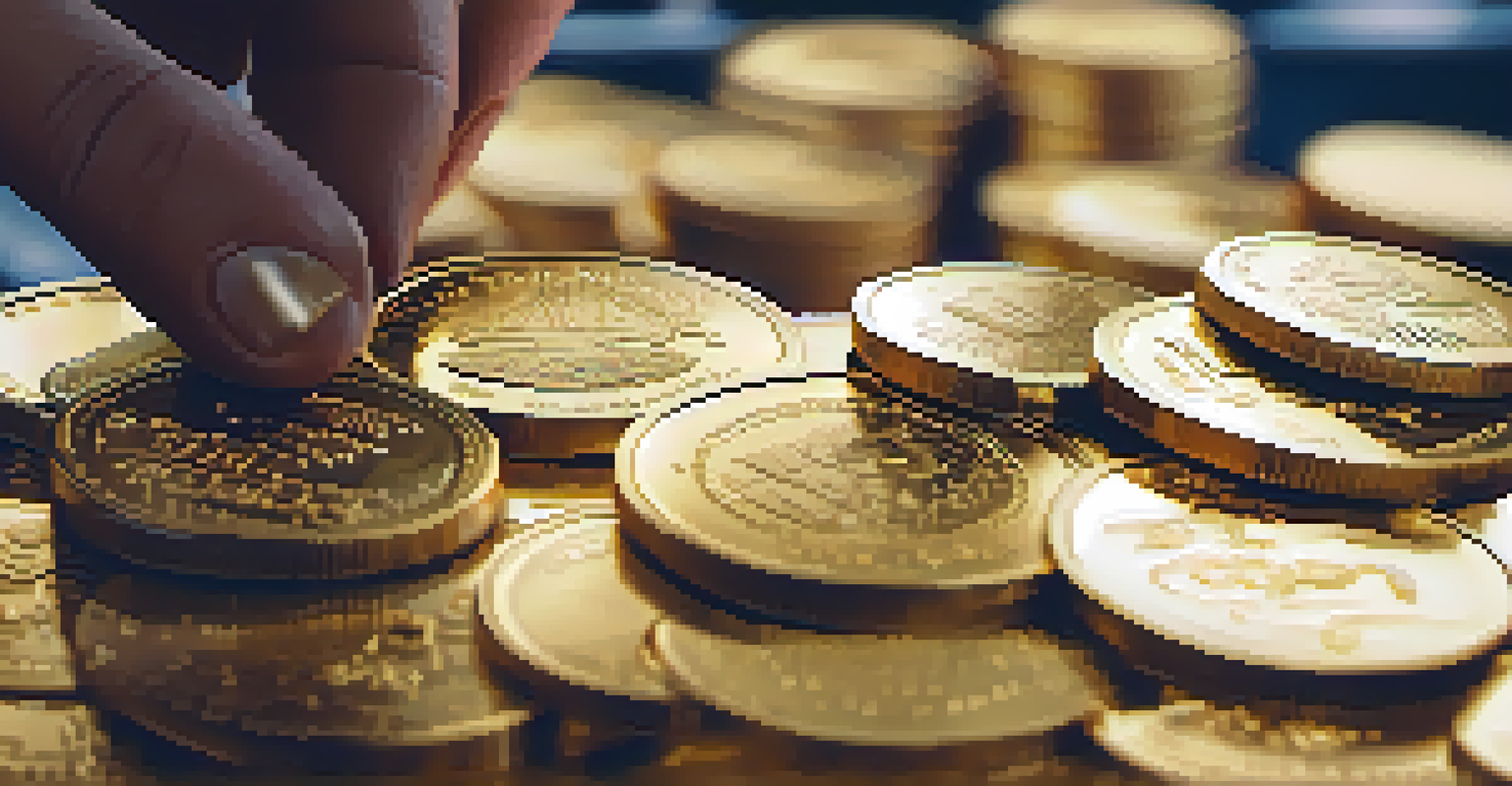Exploring Different Types of Assets Suitable for Tokenization

Understanding Tokenization and Its Benefits
Tokenization is the process of converting rights to an asset into a digital token on a blockchain. This innovation simplifies transactions and ownership transfers, making it easier for individuals and businesses alike. By tokenizing an asset, you unlock greater liquidity, transparency, and accessibility in markets that were once difficult to navigate.
Tokenization is the future of finance, where ownership and access to assets are democratized.
For instance, consider a piece of real estate. Traditionally, buying property involves extensive paperwork and significant capital. However, tokenizing that property allows multiple investors to own fractions of it, lowering the barrier to entry while providing a clear, secure way to track ownership.
Ultimately, tokenization not only streamlines processes but also opens up new opportunities for investment, allowing a broader audience to participate in asset ownership.
Real Estate: A Prime Candidate for Tokenization
Real estate is one of the most talked-about assets in the tokenization space. By breaking a property into digital tokens, multiple investors can purchase shares, thus democratizing access to real estate investment. This method helps smaller investors enter the market without needing substantial funds.

Imagine a luxury apartment complex tokenized into hundreds of shares; each token represents a fraction of the property's value. Investors can buy, sell, or trade these tokens with ease, creating a dynamic marketplace that was previously unavailable.
Tokenization Enhances Asset Liquidity
By converting assets into digital tokens, tokenization increases liquidity and accessibility, allowing a broader range of investors to participate in markets like real estate and art.
Moreover, tokenization can enhance liquidity in the real estate market, allowing investors to cash out faster than traditional methods permit. This shift could revolutionize how we think about property investment.
Art and Collectibles: Unlocking New Value
Art and collectibles represent another exciting frontier for tokenization. High-value artworks can be tokenized, allowing art lovers to invest in pieces they may not afford outright. This approach not only opens the art market to more people but also provides artists with more avenues for funding.
Blockchain is the technology that will change the world, making it easier for anyone to invest in anything.
For example, consider a renowned painting that costs millions. By tokenizing it, the artist or owner can issue tokens representing shares in that artwork. Investors can then trade these tokens, facilitating a secondary market for art investments that didn’t exist before.
This method also introduces transparency regarding ownership and authenticity, which has long been a concern in the art world. As a result, tokenization can help build trust while creating new opportunities for artists and collectors alike.
Tokenizing Stocks and Equity: A New Era of Investment
Stocks and equity are prime candidates for tokenization, allowing companies to issue digital shares on a blockchain. This process can streamline the investment process, making it easier for smaller investors to buy into a company. It also opens up possibilities for fractional ownership in companies that were previously accessible only to wealthier investors.
Let's say a startup wants to raise funds. Instead of going through traditional venture capital, they can tokenize their equity and offer shares directly to the public. This method fosters a more inclusive investment environment, where anyone can participate in the growth of innovative companies.
New Investment Opportunities Arise
Tokenization democratizes investment by enabling fractional ownership, making it possible for smaller investors to own shares in high-value assets such as real estate and stocks.
Additionally, tokenized stocks can provide real-time trading capabilities, enhancing liquidity and allowing investors to respond to market changes swiftly. This shift could lead to a more vibrant and dynamic stock market.
Commodities: Making Physical Assets Digital
Commodities like gold, silver, and oil can also be tokenized, allowing investors to trade in tangible assets without the complexities of physical ownership. Tokenization can act as a bridge between traditional commodities and modern digital finance, enhancing accessibility and efficiency in trading.
For example, if you invest in a gold token, you can hold a digital representation of your investment without needing to store physical gold. This not only simplifies the process but also allows for easier transactions and transfers, making it a win-win for investors.
By tokenizing commodities, we can create a more liquid market where investors can buy and sell their assets quickly, all while maintaining the intrinsic value of the underlying physical goods.
Intellectual Property: Protecting Creative Works
Intellectual property (IP) is an often-overlooked asset that can greatly benefit from tokenization. By creating tokens that represent ownership rights to a piece of IP, creators can establish clear ownership and rights management. This setup can help prevent unauthorized use and ensure that creators receive fair compensation.
Consider a musician who tokenizes their music rights. Each token could represent a share of royalties earned from streaming or sales, allowing fans and investors to directly support their favorite artists while sharing in the financial rewards.
Challenges in Asset Tokenization
Despite its benefits, tokenization faces challenges including regulatory compliance, security concerns, and the need for greater public understanding of blockchain technology.
Tokenization in the realm of IP not only enhances transparency but also encourages innovation by making it easier for creators to monetize their work and connect with supporters.
Tokenizing Loyalty Points and Rewards: A New Approach
Loyalty points and rewards programs are ripe for tokenization, as they often exist in silos across different brands and platforms. By creating digital tokens for loyalty rewards, companies can enhance customer engagement and provide consumers with more flexibility in how they use their points.
Imagine a scenario where your loyalty points from various airlines, hotels, and retailers could be converted into a single token. This would not only simplify tracking but also enable customers to trade or redeem their points across different platforms, increasing their value.

Tokenizing loyalty points can lead to a more dynamic and interconnected rewards ecosystem, ultimately benefiting both consumers and businesses by fostering greater customer loyalty and satisfaction.
Challenges and Considerations in Asset Tokenization
While the benefits of asset tokenization are clear, there are significant challenges and considerations to keep in mind. Regulatory compliance is one of the most pressing issues; different jurisdictions have varying laws regarding digital assets, which can complicate the tokenization process.
Additionally, the technology itself must be robust and secure to prevent fraud and ensure that token ownership is transparent and traceable. Investors need confidence in the system, and any breaches could undermine trust in tokenized assets as a whole.
Finally, education is crucial. Many people are still unfamiliar with blockchain technology and how tokenization works. Ensuring that stakeholders understand these concepts will be vital for the widespread adoption of tokenized assets.